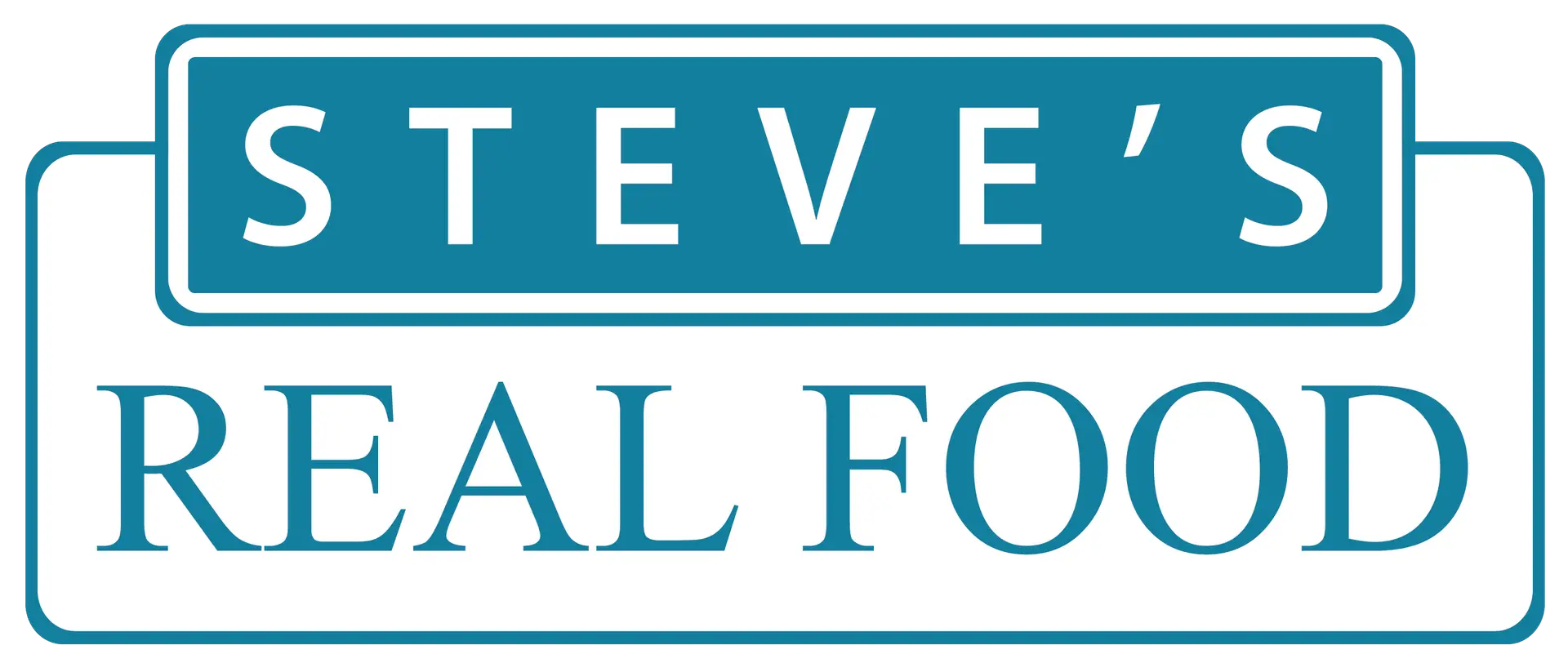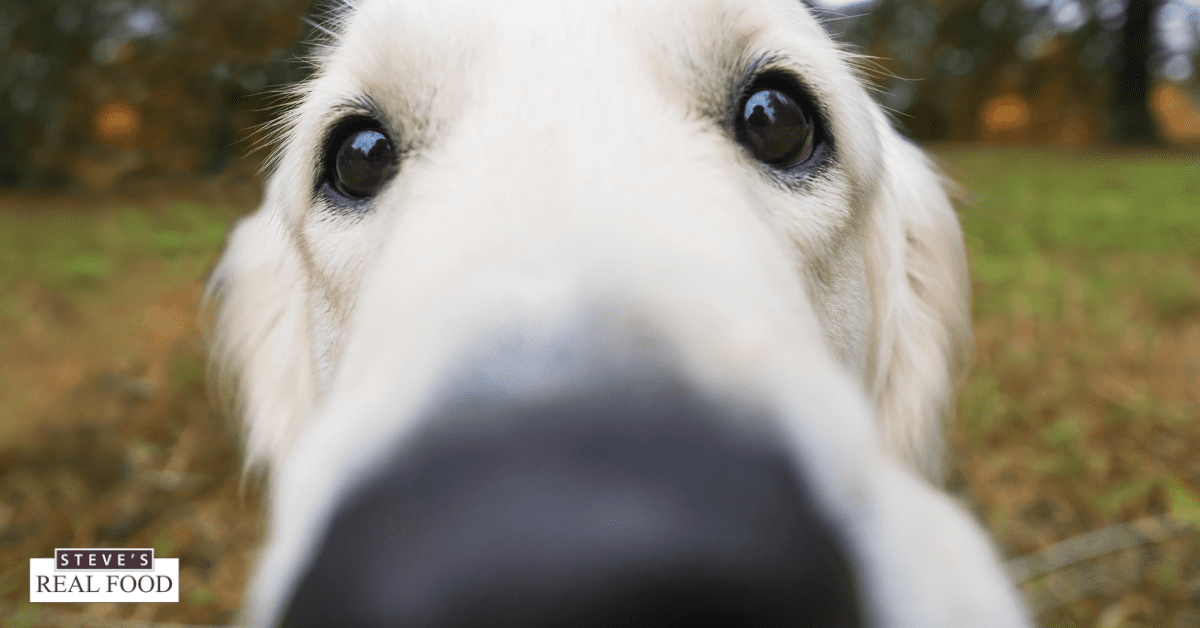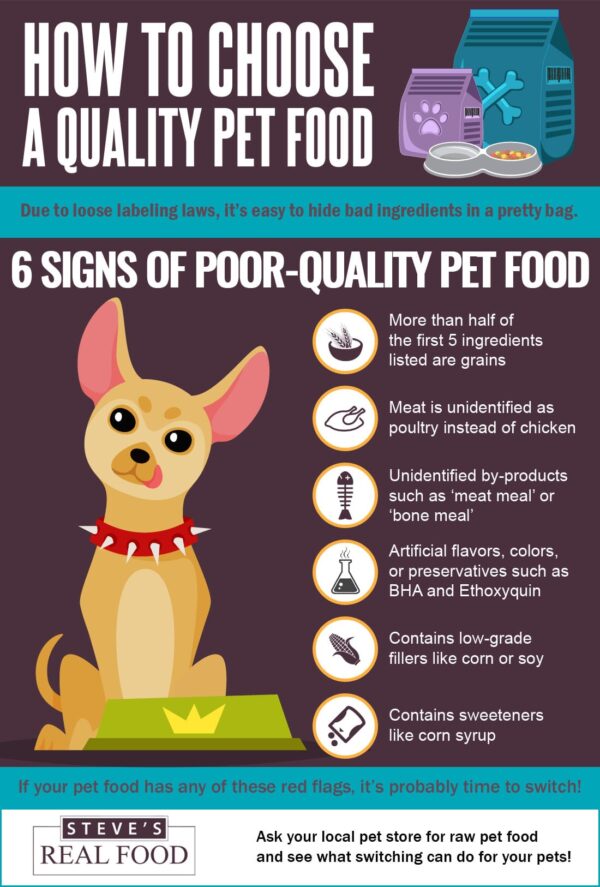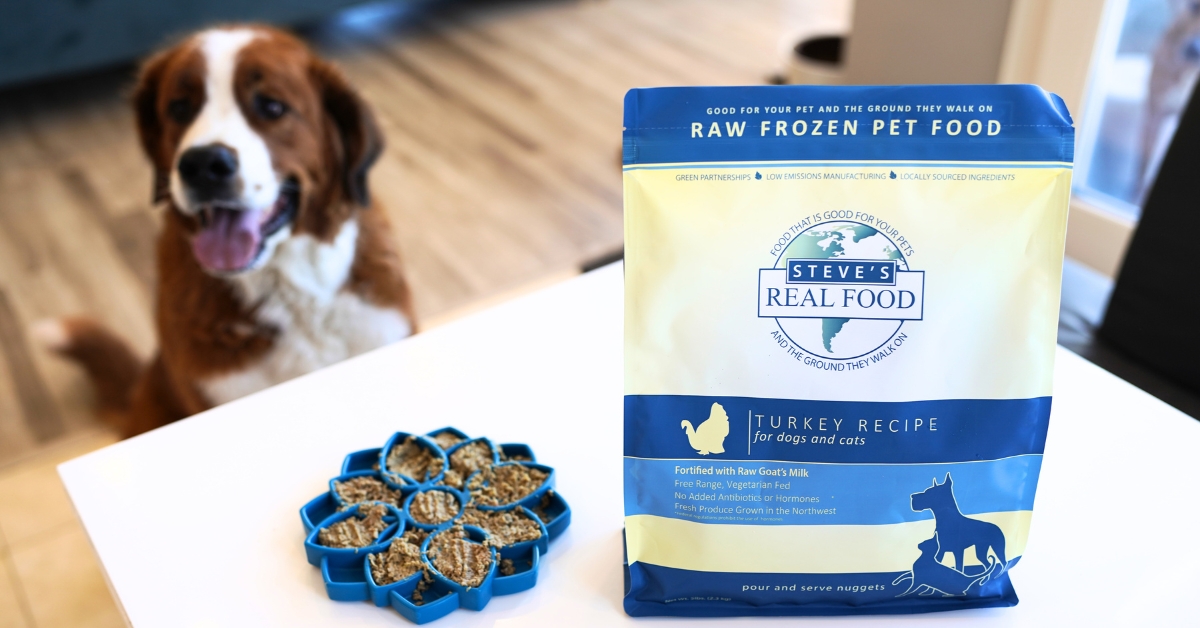It can be a mystifying experience trying to pick the right food for your dog. TV and print ads are often misleading. Package labels can be so lengthy and confusing that it can be very hard to figure out what you’re buying. And, your dog may be a bit of a finicky eater. Now what? All things combined, the quest for truly nutritious food that your dog really likes can turn into a pretty long journey. Here’s some helpful information to help you choose food that is healthful, that your dog likes, and that is ethically and environmentally responsible.
Rendered Meat Products
Popular pet food brands often use a meat rendering process. In the rendering process, a bunch of “leftover” meat products are mixed and ground together into a sludge. The substance is then cooked in a vat at high heat for a few hours to render the grease, fat, and solids. When these drifts up to the surface, they’re skimmed off. This scraped-off substance is then packaged and labeled as “meat by-product” or “meat meal.”
That may not seem like an ideal way of producing high-quality pet food. That’s because it’s not. You don’t have to be a pet food industry expert to recognize the major shortfalls in such a process, or in terms of producing an optimally nutritious, good-tasting or well-balanced pet food.
What’s in Meat By-Products?
Pet food industry experts have conflicting opinions on the advisability of feeding a dog meat by-products. Some argue that pet food production from by-products fulfills an important ecological need, repurposing biological materials that would otherwise be discarded as waste. But, others have concerns about meat-rendering pet food plants possibly using meat sources that are unfit for use as food.
Pet food producers are legally permitted to mix protein sources in rendered meat products. Adding to the uncertainty is the matter of relatively weak regulation of rendered by-products, which has led to reports that meat used in plants is from dead animals taken from roadways. There have also been reports of producers using ingredients like hooves and heads from cattle, pigs, horses, and sheep. Some reports have claimed that diseased animals and others that are unfit for human food are used. That’s why pet food labels list “by-products” or “by-product meal” instead of easily identifiable meat sources. This situation has led many people to look for food with proteins from a single animal source and ingredients that are of a quality fit for human food.
Know Pet Food Packaging Buzz Words
At a minimum, people should be able to understand dog food labels. The labels shouldn’t be misleading in the language they use. Quality producers of pet food products back up their labels with sufficiently clear information. But run-of-the-mill producers may use language that makes information about what’s really in the can or paper package pretty obscure.
For example, if the label says:
- “Contains Beef” or “With Beef” — Can mean that the product contains as much as 97% of other substances and as little as 3% beef.
- “Beef Flavored” — Can mean that the product does not contain any actual beef.
- “Beef Dinner,” “Beef Recipe,” or “Beef Formula”— Must mean that at least 25% of food’s total weight is real beef. The remainder of the weight (up to 75%) can consist of other ingredients.
- “Beef Dog Food” — Must mean that at least 95% of the food’s total weight is real beef.
Flashy Pet Food Labeling Adds Mystery
With all the baffling labels, decoding the terms to figure out which ones offer your high-quality pet food becomes more than a minor challenge. Throw in another layer of labeling ambiguity, such as one of these below, and you’ve really got a vague description of whatever is in the package.
- “Premium”
- “Super-Premium”
- “Ultra-Premium”
- “Gourmet”
What do those descriptions really mean? Fingers crossed. Do they at least mean that the pet food in the package is better and actually worth paying a little extra for it? The answer is—not really. Such adjectives in labeling are often just embellishments used to stimulate some excitement in buyers.
Pet foods with “premium” on the label, or any of the other above enthusiasm-building adjectives are not required to consist of different ingredients or any higher quality of the same kinds of ingredients than any other product that contains complete and balanced pet food.
“Natural” Pet Foods
Don’t be discouraged. Even though by now you’re probably dreading hearing about yet another misleading labeling term, this is where things improve for pet food buyers. This term “natural” is one that has much tighter rules attached to it. Any pet food with a “natural” label, is regulated by the Association of American Feed Control Officials. The AAFCO is a collective of local, state, and federal government agencies that regulate animal food manufacturing.
The AAFCO requires pet foods labeled as “natural” to contain only ingredients from animal, plant or mined sources. Foods with the “natural” label are not permitted to be highly processed. They also cannot contain artificial flavoring, coloring, preservatives or other synthetic chemical ingredients.
“Organic” Pet Foods
Pet foods labeled as “organic” must be produced, according to AAFCO standards, without using artificial fertilizers or chemical pesticides, and without food additives or use of radiation for ionization. Pet foods wearing the “organic” label must also be free of contaminants from industrial or human waste. Further, food animals must be raised with a healthy diet, without growth hormones, and without routine administration of antibiotics.
Organic pet foods can be produced at differing grades of organic quality:
- “100% Organic” — Pet food bearing this label must contain a minimum of 95% organic ingredients.
- “Made with Organic Ingredients” — Products with this labeling must consist of at least 70% ingredients that are certified as organic.
Organic pet food producers are required to obtain certification and to meet standards specified for production, in order to qualify to label their pet food products as “organic.”
How Can You Be Sure You’re Choosing a High-Quality Pet Food?
As we’ve seen, there are a lot of misleading labels on pet foods. Since there are currently no general regulations that require pet food labels to be clearer, it’s up to us as consumers to look past the packaging and do our due diligence in pet food selection.
First, when researching which pet foods make the best sense to buy for your dog, you can use this little questionnaire as your checklist:
- Is the first ingredient listed on the Ingredients List identifiable as a single-source of protein?
- Do the ingredients in the pet food product together form food that is nutritionally complete and balanced?
- Is the animal protein source from a producer that is confirmed as one using humane farming practices? Or, if it’s a fish source, does the producer use sustainable fishing practices?
- If there are whole vegetable and fruit ingredients included and are these grown naturally and in an environmentally responsible way?
- Where are the raw ingredients for the pet food from? (Producers of premium pet foods avoid obtaining ingredients from countries where pet food recalls have caused widespread concerns.)
Second, be willing to reach out and questions. Pet food companies that label their products as “Made in the USA” should not avoid answering questions you may have. Here are a few of the kinds of questions to consider asking a pet food company before you decided to start or continue feeding your pet the foods they produce.
- Where are your pet foods ingredients produced?
- Where are your pet food formulations manufactured?
A Good Rule of Thumb in Considering The Best Pet Food
Consumers must use the information and tools we have to figure out what’s best for our dogs in pet food. We have to pretty much accept that the Ingredients List is accurate. That makes a pet food producer’s willingness to be transparent about their sources and processes a central consideration in choosing the food that your dog needs to live a healthy and happy life. So, look for a pet food provider that is transparent about their product. Remember, a pet food company that is committed to top quality will openly explain what is in the food product that you are buying for your dog.
